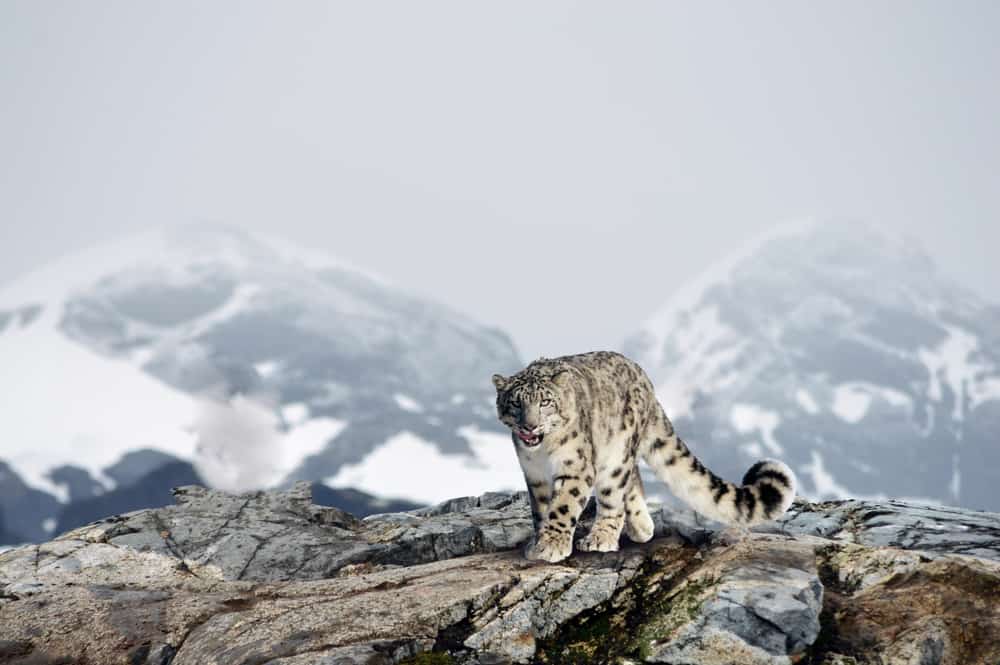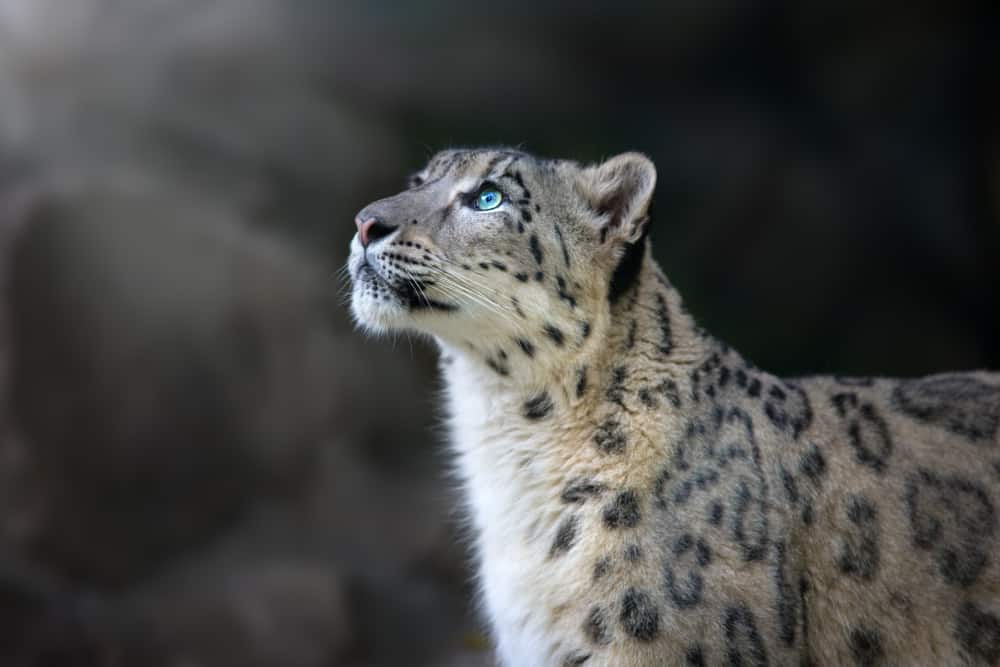Snow leopards are among the world’s most endangered big cats. These majestic animals inhabit a vast range of mountain habitats across Central and South Asia.
As human populations expand, snow leopard numbers decline due to poaching, habitat loss and retaliatory killings by herders whose livestock is threatened.
Snow leopard conservation efforts must focus on protecting their shrinking high-altitude habitats while at the same time working with local communities to reduce conflict between them and these iconic predators.
This article will explore the current status of snow leopards in an effort to understand what can be done to protect this species from extinction.

Snow Leopard Habitat
The snow leopard, a powerful apex predator of the mountainside, is increasingly threatened by human urbanization and climate change. This iconic species has been pushed to the brink of extinction as its traditional habitats are destroyed or fragmented due to humanity’s ever-encroaching presence.
Able to thrive in regions with temperatures between -25°C and 20°C, these majestic cats inhabit alpine meadows and rocky mountain slopes at elevations up to 4500 meters above sea level. However, their ability to survive in such environments is being greatly undermined by the effects of global warming exacerbated by human activities such as deforestation and burning fossil fuels.
As a result, snow leopards have had less access to prey animals like marmots, ibexes, and yaks due to reduced vegetation cover from prolonged droughts caused by rising temperatures on an already dry landscape. In addition, habitat fragmentation resulting from roads and other forms of infrastructure for humans further reduces viable space for this species’ survival.
Snow leopards now face an uncertain future unless immediate action is taken towards conservation measures that can protect their habitats against destruction brought about by our own actions. It is essential that we act now if we wish them remain part of our planet’s biodiversity for years to come.
Snow Leopard Biology
Snow leopards are elusive and beautiful cats native to the high altitude regions of Central Asia. These majestic creatures have adapted to their cold environment in order to survive, developing thick fur coats for insulation against the harsh weather conditions.
Snow leopard diet consists predominantly of wild sheep, goats, marmots and hares, but they will also take smaller prey such as birds or rodents if available.
Known as both powerful hunters and cautious animals, snow leopards exhibit behavior that reflects their solitary nature. They spend much of their time alone hunting at night when temperatures are cooler and there is less competition from other predators.
When not actively stalking prey, they tend to seek out rocky ledge areas where they can nap safely during the day while camouflaged by the white coat of winter snows. The combination of stealthy movement and effective camouflage makes them difficult for people to observe without special equipment.
Studying snow leopards provides valuable insight into how these magnificent cats interact with their environment and helps us better understand the threats faced by many endangered species today. Researching this animal’s ecology reveals important information about what conservation strategies must be employed in order to protect them effectively in the future.
Threats To Snow Leopards
Snow leopards are magnificent creatures, and their beauty is only matched by their strength and stealth. They have adapted to living in some of the most extreme climates on our planet, from the mountains of Central Asia to Russia’s far east region.
Despite this adaptability, snow leopards face a growing number of threats that could eventually lead to their extinction. The major threats to snow leopards include:
- Poaching – Snow leopard fur and other body parts are highly sought after for use in traditional Chinese medicine and as luxury items among wealthy individuals around the world. Fueled largely by demand from China, poaching has become an increasingly serious threat to wild populations over recent decades.
- Habitat Loss & Fragmentation – As human settlements expand into formerly remote areas inhabited by snow leopards, they often encroach upon habitat used by these animals.
- Conflict with Humans – Snow leopards sometimes prey on domestic livestock which can create conflict between humans and wildlife.
- Climate Change – Climate change poses numerous risks for many species across the globe including snow leopards as temperatures rise and habitats shift due to changes in precipitation patterns.
These threats put snow leopard populations at risk not just today but also into the future unless concerted conservation efforts are made now before it’s too late – to protect their habitats and ensure their long-term survival.
Conservation Efforts
In recent years, efforts have been made in order to ensure the protection of snow leopard populations and their habitats. This work has become increasingly important due to the threats that these majestic cats are facing from climate change and human development.
Various conservation strategies have been implemented as part of this effort. These range from supporting local communities by providing economic incentives for protecting wildlife, reducing poaching through increased enforcement activities, expanding protected areas and improving management practices, increasing public awareness about the importance of conserving snow leopards, and monitoring population trends.
All of these strategies aim to reduce the threats posed by climate change and human development while also promoting sustainable use of the species’ habitat. These initiatives have seen some success in terms of stemming further losses of snow leopard populations but much remains to be done if we wish to secure a better future for these animals.
It is clear that continued efforts must be made in order to protect this species before it is too late.
Local Communities And Snow Leopards
Snow leopards are an iconic species in the mountain regions of Central Asia and their conservation is a priority for many local communities.
Tourism associated with snow leopard viewing has become increasingly popular, providing significant economic benefit to local people who host visitors.
However, poaching remains one of the greatest threats facing these cats and there have been reports of individuals illegally trading skins, bones and other body parts on black markets.
It is essential that local communities understand the value of conserving snow leopards through increased tourism opportunities as well as stricter law enforcement measures against poachers.
Local authorities can work together with nearby villagers to promote sustainable livelihoods from wildlife tourism while simultaneously discouraging illegal activities such as hunting or trading endangered species products.
Education and awareness-raising campaigns within villages should be conducted by experienced professionals so that locals better appreciate why snow leopards must be protected for generations to come.

Protecting Snow Leopard Habitats
Snow leopards are a species of large cat native to Central and South Asia, with their habitats spanning from the Tibetan Plateau in the west all the way to Mongolia and Russia in the east.
Unfortunately, these majestic creatures are now globally endangered due to threats such as habitat fragmentation and human encroachment.
Habitat fragmentation is caused by both natural disasters like landslides or avalanches, as well as human activities such as deforestation or building roads that can split up snow leopard territories.
On top of that, overgrazing of livestock by local herders often leads to competition for resources between humans and snow leopards.
As a result, it has become increasingly difficult for snow leopards to move through their habitats since they need large ranges in order to survive.
Human development projects have also been known to encroach on existing snow leopard habitations which further exacerbates this problem.
Given this dire situation, conservation efforts must be taken seriously if we wish to ensure that future generations will be able enjoy seeing wild snow leopards roaming through their habitats.
Conservation organizations around the world have already started working towards protecting areas inhabited by Snow Leopards while simultaneously creating new protected sanctuaries for them where possible.
From educating communities about living together with wildlife to introducing laws that protect certain species, there are many strategies currently being implemented to help secure a better future for our beloved snow leopards.
Sustainable Development And Conservation
The snow leopard, an endangered species native to the high alpine and subalpine regions of Central and South Asia, has been on a rapid decline over the past few decades. With only around 4,080-6,590 mature individuals remaining in their natural habitats across 12 countries, the need for conservation is paramount.
Snow leopards have been adversely affected due to human activities such as poaching, habitat fragmentation from construction projects, livestock grazing and snow leopard tourism. This can lead to displacement of prey animals that provide food for local communities as well as increased competition for resources among predators like wolves or bears.
To mitigate this conflict between nature and humans it is important to put into place sustainable development initiatives that are focused on preserving both the land and livelihoods of people living near these areas. Conservation measures should also include creating buffer zones where access to certain areas is restricted in order to protect fragile ecosystems and encourage positive interactions with wildlife while still providing economic benefits to those living nearby.
Without proper protection, we could see further declines in snow leopard populations which would be detrimental not only for biodiversity but also for rural communities who rely on them for sustenance. Therefore, effective policies must be implemented in order to ensure coexistence between humans and wildlife by promoting responsible ecotourism practices; increasing education about sustainable resource management; integrating initiatives that help improve understanding and respect towards wildlife; improving infrastructure for better monitoring of protected areas; protecting key habitats; reducing pressures from illegal hunting, pollution from mining operations or other industries; as well as encouraging involvement from local governments and international organizations in order to create more secure futures for both the snow leopard species as well as its surrounding environment.
Education And Awareness
Snow leopard conservation has been a major focus for many organizations and countries around the world. The goal of these initiatives is to protect the snow leopards from poaching, habitat destruction, population decline, and other threats.
One way this can be accomplished is through ecotourism. Ecotourism focuses on responsibly visiting natural areas in order to educate visitors about the environment as well as generate revenue that can be used for conservation efforts. This could involve:
- Guided tours of ideal habitats
- Observing wildlife
- Learning about local flora and fauna
- Participating in activities related to preserving ecosystems
Poaching prevention also plays an important role in protecting snow leopards. By raising awareness among locals and providing education programs on sustainable hunting practices, communities can become effective stewards of their own land while still being able to provide for themselves financially in a responsible manner.
Additionally, governments have put laws into place that help reduce illegal hunting by stopping poachers before they even reach their destination or catch any animals.
Conclusion
Snow leopards are an iconic species found throughout the mountain regions of Central Asia. Despite their wide distribution and presence, snow leopard populations have been greatly declining due to habitat destruction, overhunting and poaching.
As a result, effective conservation efforts need to be implemented in order to protect these magnificent cats from extinction. To ensure the future of snow leopards, it is paramount that local communities become involved in conservation initiatives with sustainable development at the core.
It requires education and awareness campaigns coupled with protection of habitats through long-term monitoring programs. In this way, we can hope that snow leopards will continue to grace our planet’s mountainous landscapes for years to come – if only we take decisive action now!
Alluding to the proverb “A stitch in time saves nine”, it is clear that immediate steps must be taken if we are to preserve these beautiful creatures for generations yet unborn.
